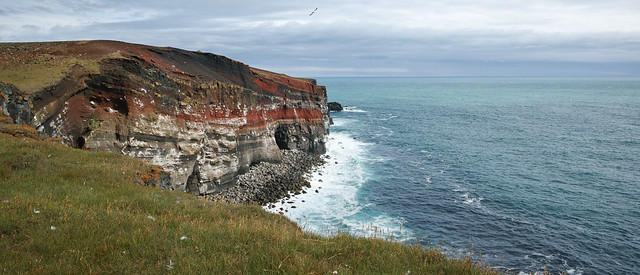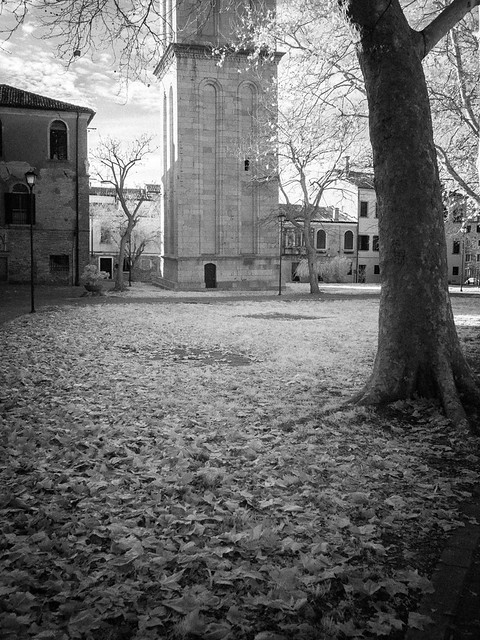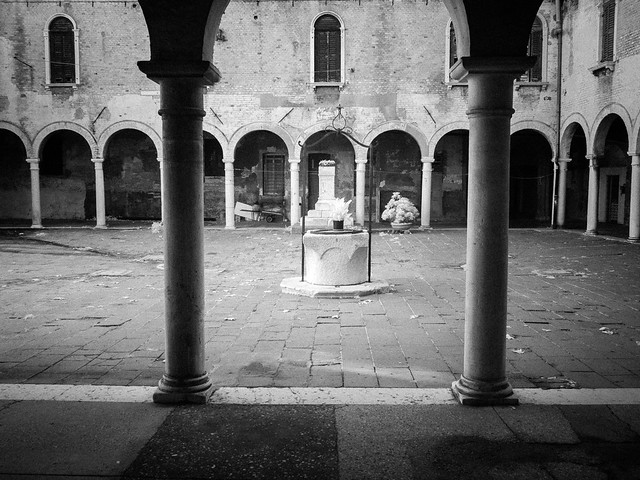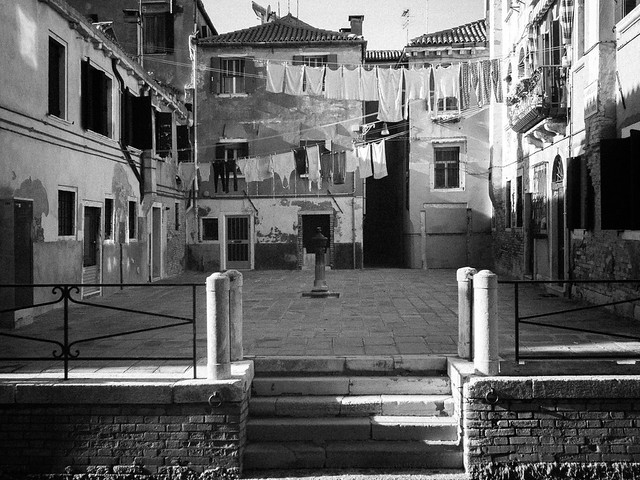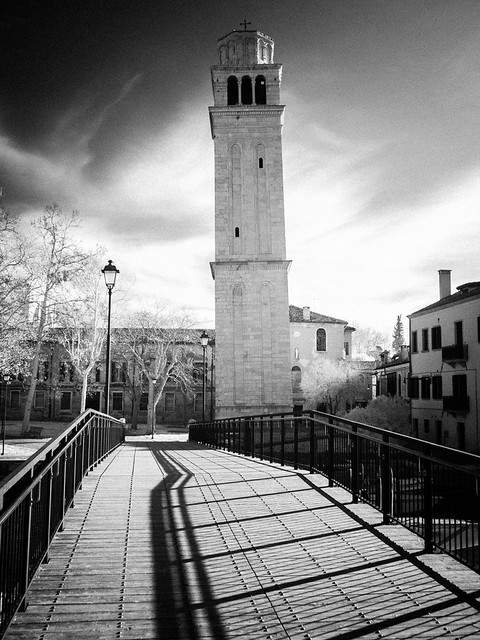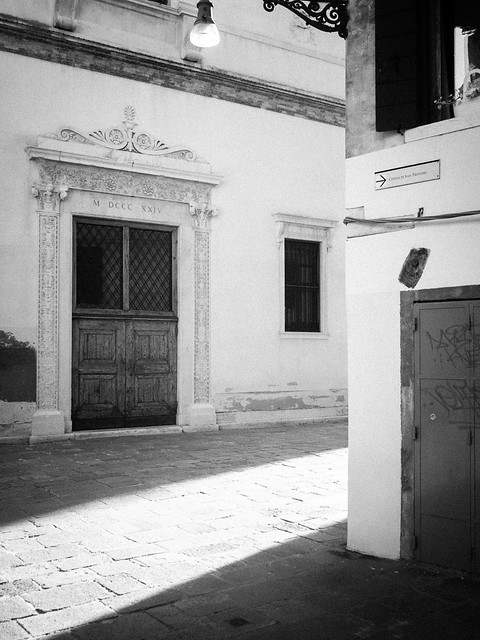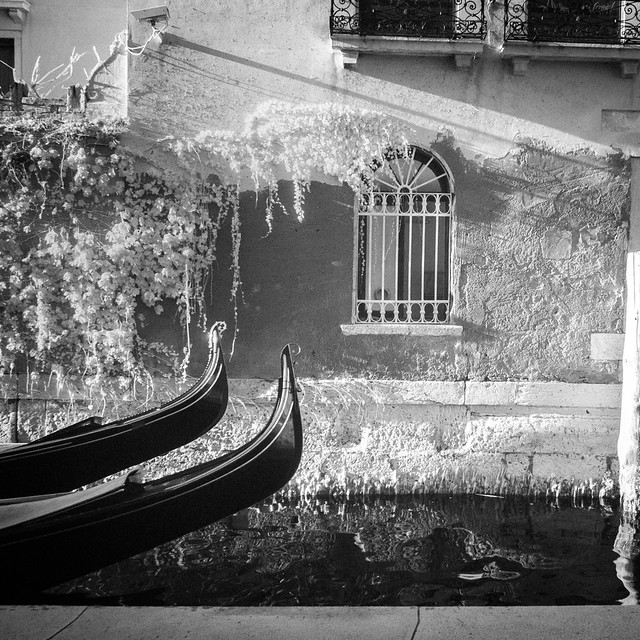Do you shoot film ?
(I don't care either way)

...however, there's one aspect that nags at me. There is an extensive set of template interviews with various photographers, entitled "I am
But otherwise, the vast bulk of "reasons why I shoot film", apart from the geriatric "it slows you down" (really, ever tried an EOS-1v ?), seem to be associated with culture and fashion, and, inevitably, gear. The aesthetic stuff, sure, ok, but the idea by association that digital somehow has no aesthetic qualities is absurd. Anyway, developing an aesthetic surely means first working out for yourself the look you want. If that look happens to be best achieved using a particular film stock shot in a given way, fine, but I suspect in 99% of cases the process is reversed.
There's no need to turn it all into a cult.
There are some very clear exceptions, but the majority of film photography I see these days really takes the film "look" and lays in on extra thick with a blunt trowel. I find this really bizarre - back in The Good Old Days, when there was no choice, almost all today's film photos would have been consigned to the trash, at least by "serious" photographers. All the identifiers, excessive grain, weird colours, blocked shadows, dead highlights, were things that people went to huge lengths to circumvent. Film technology too was driven to eliminate these defects, as late-generation emulsions such as Portra, E100G, Ektar 100, Provia and so on clearly show. Digital just took it a step further.
I've said it before, and I'll say it again - I shoot film because several cameras I want to use require it. That's it. And I manipulate the film, generally, to make it as clean as possible.
Still, Emulsive is a great web site, and all these interviews are well worth reading, but not because of all the film mumbo-jumbo (which some, to be fair, avoid), but rather because there are some really interesting photographers getting promoted. But are they interesting because they shoot film ? No, well, not to me anyway.
Postscript: Actually, if you read Hamish Gill's interview on Emulsive, and scroll down to "WHAT DO YOU THINK IS PEOPLE’S GREATEST MISCONCEPTION ABOUT FILM PHOTOGRAPHY AND HOW WOULD YOU SET IT STRAIGHT?", you find he presents this whole argument way, way more eloquently than I ever could....which is reassuring.

Vote for me!
MAKE SNOWHENGE.NET GREAT AGAIN!

You can VOTE FOR ME here (or somebody else, if you prefer) - only today, 8th February.
MAKE SNOWHENGE.NET GREAT AGAIN!

Some Guy bites back
large pinch of salt absolutely mandatory
I could say taking my Iceland photography as the focus is not the best idea. To be honest, for me photography is just an excuse to spend time in Iceland. But since recently I have actually evolved a framework that I might be able to drape some Icelandic photography over, let’s leave that aside. Generally, the problem I was rambling on about the other week is not that I don’t know what I want to express.The problem lies in the detail of how to express it. And by extension, coming up against seemingly diametrically opposed advice on how to do so.
There is something slightly odd about advocating someone to study photo books (you should see my bookshelves) read about Real Photography (ditto, and a pretty broad selection) but at the same time advising them to steer clear of anything that smacks of technique, especially, God forbid, post-processing. Technique doesn’t make you a good photographer, but lack of technique - applicable technique, that is - can prevent a good photographer from emerging.
Certainly it is all too easy to go overboard on technique - the web is overflowing with examples of dangerous idiot savants who’ll sell you their useless advice - but that does not invalidate technique in itself. It would be like saying that a writer has no need of vocabulary or grammar. And that is a useful analogy: I often feel like I’ve got a whole bunch of stories to tell, pictorially, but I don’t quite have the technique to tell them. Let’s not fall into the trap of taking that too literally - of course there is a storytelling aspect to photography involving the sequencing of and relationships between photos. But there is also a storytelling aspect to single images, and the language to tell that story has verbs like dodging and burning and nouns like micro-contrast and tone. It’s hardly a new observation. So just because I may be having some trouble reconciling apparently contradictory advice on how to apply the language of post-processing doesn’t mean I haven’t got a clue about what I’m trying to express.
There’s another trap easily sprung - Andrew picks up on the not uncommon advice to flip a picture to study the balance. It comes naturally to view camera photographers who see the world upside down on the ground glass. The trap Andrew stumbled into is this: he exclaims “Really, who gives a shit about balance? I don't. Balance is a thing, but it's not an unalloyed good thing any more than blue is a good thing. It's just a property of the picture”. Well, yeah. But, er, who said anything about it being anything else ? The point is the trick frees you up to consider the balance. It doesn’t say, anywhere, that the balance has to be “right”. It just IS. Balance can be harmonious, and serene, or it can be tense and uneasy. If you “don’t give a shit about balance” then honestly I wonder if you give much of a shit about photography, finally. But I’m pretty sure Andrew assumed balance, in this context, means nice pretty blue skies with unicorns jumping over perfect rainbows. His reaction to my mention of this idea, by setting up and demolishing a straw man, somewhat tainted the rest of his argument. Actually I think he’d rather enjoy reading David Ward’s philosophical treatise on landscape photography, “Landscape Within”.
I suspect anything hinting at Landscape Photography is a bit of a red rag to Andrew. Landscape has become the stamp collecting or transporting of photography. It’s what socially inept people in smelly anoraks do, which lets them conflate their longing for shiny toys with wanting to impress the girls by being creative (we’re pretty much all boys). Well, anyway, that’s a view which Andrew sometimes gives me the impression he may subscribe to. He’s hardly the only one, but this idea that Landscape Photography is just a crutch for DPReview or 500px denizens and not something real Real Photographers do is pretty prevalent. Hell, it’s not far from the truth. But it’s a generalisation, and generalisations cloud vision.
To quote another bit “So what was it like, David? (and not just David, all you folks in the cheap seats should follow along) Take some time. Get out a notebook. Write. Think. What was it like to be in Iceland?” - well, actually, I’ve done that. Quite a lot. It’s scattered all over this blog, and it’s starting to coalesce.
(note, all this is in good humour. Andrew Molitor seems like the kind of guy I'd be happy to buy a drink for). Read his blog - he's definitely wrong about one thing - I'm not an "an occasional reader here", actually I read pretty much every word he writes.

woe is me
revenge of the machines
Eventually I ended up with a stable (whisper it) system with a new 4Tb primary store and everything else working. In a fit of panic I also ordered a Drobo 5Nt backup system, which (a) arrived 1 week overdue, and (b) was probably a big mistake, but it's hard to get any sensible alternatives down here in Hicksville.
Then my 15 year old original Apple Cinema Display decided it only likes displaying red. Now having replaced that with a new Eizo CS270, I've realised that the colour on my cherished Quato 240LE is way off, and no amount of calibration can fix it.
So my nerves are a little frazzled.
Here's a nice relaxing photo from Iceland. Deep breaths... and blueberry Skyr.
Krýsuvíkurbjarg

Cameras or Photography?
it’s one or the other
Cameras get in the way of photography. That sounds like a fairly ridiculous statement, but I think it is difficult to argue against. I’d like to think I’m interested in photography, but of the far too many hours I spend browsing the web, I spend far more reading about cameras than I do about photography and photographers. But what is very noticeable is that the more engaging photographers just don’t talk about cameras at all (and usually have dull websites, but that’s another matter). Maybe they feel a stigma attached to such discussion, or maybe they’re just not interested. But anyway, when the discussion veers towards cameras, as it usually does, something is lost. Of course, ten seconds on this site shows quite clearly which camp I’m in. It’s not exactly a gear site - and after all, these do encompass quite a wide spectrum - but it hardly ignores cameras or other paraphernalia of photography-as-hobby. So I’m in no position to judge, even if I were judging, which I’m not - just observing. But coming back to the original statement, I do find that the more I think about cameras, the less interested I am in photography, and the less interesting my photography gets. Fortunately I have by and large stayed with the same principal brand and gear over a very long period, and I’ve never been afflicted by the more extreme cases of the malady which involve switching brand every 6 months. But nevertheless, if there is one thing that separates photography as art from photography as hobby, it’s the susceptibility to Gear Acquisition Syndrome.
The cycle of endless new, improved, must-have cameras has slowed down a bit, but it hasn’t stopped. It has changed tack a bit, and now we’re seeing design becoming much more prevalent in the marketing push, especially retro design sparking nostalgia for the alleged romance of the mechanical heyday of the film era.
So, what bought this on? Well, a new camera on the market, basically. Namely, the new Olympus Pen-F. It’s a nice looking piece of metal, and it is getting mainly rave reviews everywhere (although this review, from an actual Olympus employee, is strikingly lukewarm). Amongst Olympus owners, of which I’m one, there is a discernible of peer pressure to buy one. Well, yes, it’s a nice camera, but I’ve already got an Olympus Pen, an E-P5, and that took me long enough to decide to buy. The Pen-F, apart from the striking design, has 4 Megapixels more (not terribly significant), a fixed built-in EVF, and lots of new modes aimed at doing everything in camera, outputting JPEG, when for the last decade we’ve had it piled on us that we should be shooting Raw. What the Pen-F does not have, but what the E-P5 does, at least as an accessory, is a tilting EVF which allows you to hold the camera at chest level, and affords a different way of shooting and different perspectives. For some this is uninteresting, for me it’s a big plus. Also the E-P5 EVF is the same as the one on the top of the range E-M1, and superior to that on the Pen-F. Add into that an eye-wateringly high price, and well, for now at least I think I’ll pass.
This leads on nicely to the previous “upgrade” cycle, when the E-P5 replaced the E-P3. There again I dragged my feet, as I was used to the E-P3, and Olympus had moved the controls around disturbing my reflexes. But there were a couple of compelling arguments that time, so eventually, I switched. But I didn’t just abandon the E-P3. Instead I had it converted to infrared, which gives me a good excuse to water down this gear-obsessed post with some photography, a selection of infrared shots from Venice, taken back in December.
I can’t keep away from the gear, but it really is a relief to get back to photography.

